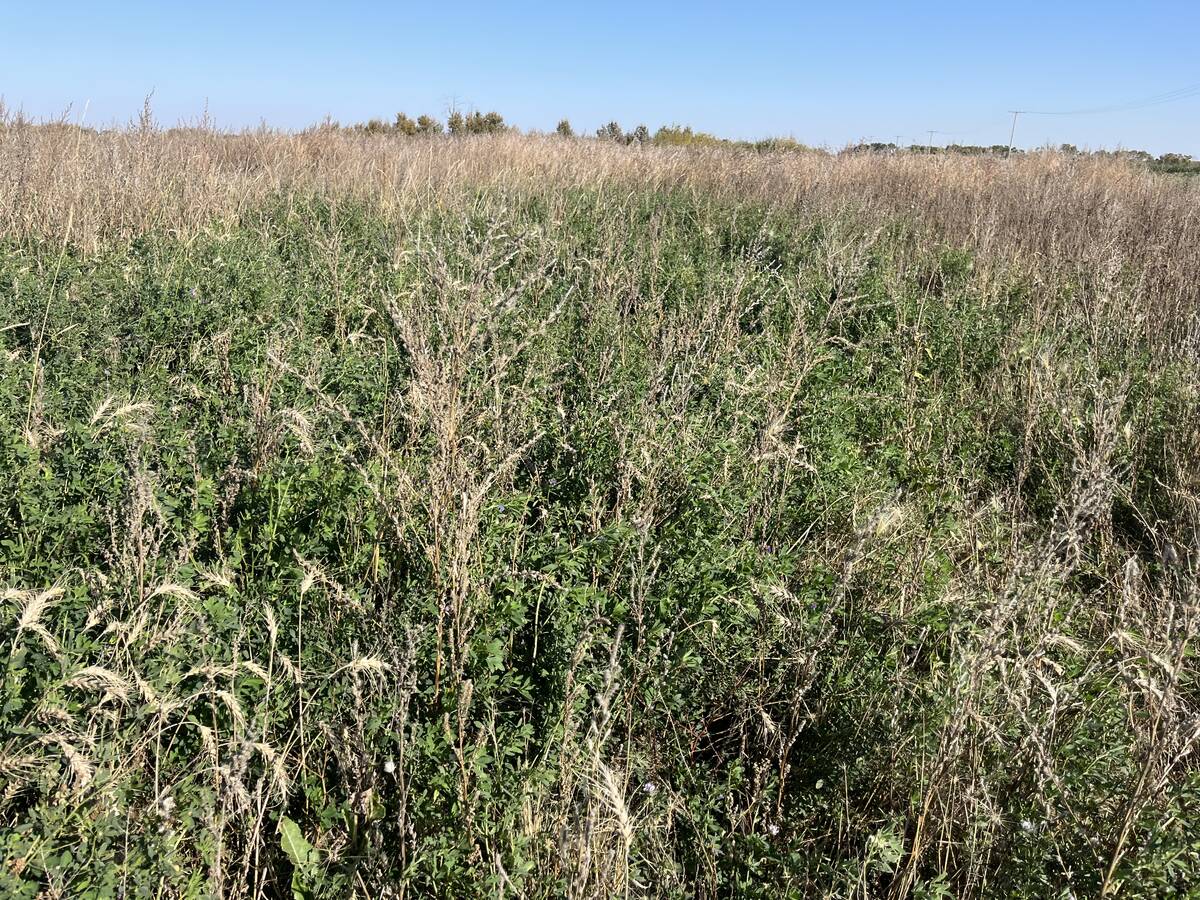Fred Provenza, a professor from Utah State University’s wild land resources department, likes to tell the story about a colleague who met an old, crusty rancher at a seminar in Montana.
The conversation between the academic and the rancher hit a roadblock so Provenza’s colleague, out of desperation, asked the rancher what the average weather was like at his ranch in eastern Montana.
“Average weather?” the crusty rancher shot back. “How about I ask you a question. What’s the average person like where you come from?”
Read Also

Dormant seeding forages frees up farmer time and gets ahead of weeds
Dormant seeding isn’t common practice and can appear daunting, but there are some techniques to give Manitoba farmers an edge
The point of the story, Provenza told his audience at a Manitoba Forage Council workshop held in Brandon last month, is that grazing livestock are the same as humans. There’s no such thing as an average cow, an average sheep or an average bison.
Provenza, who presented information on how to use animal behaviour to improve production and landscape health, said instead of focusing on a so-called average animal, producers need to consider the variance within the herd.
As proof of why variance is important, he referred to his own study published in the Journal of Animal Science, in which he and his colleagues conducted an experiment with two groups of calves.
One group was fed a mixed ration of barley, rolled corn, corn silage and alfalfa hay, while calves in the other group were allowed to choose which feed they ate.
After observing the eating patterns, the scientists found that no two animals in the choice group consistently chose the same feed.
As well, the mixed ration group ate more feed but didn’t gain weight at a faster rate. Because they ate more, the daily cost of the mixed ration was $1.58 US per day compared to $1.36 per day for the choice group.
The researchers concluded that individual animals make choices of what to eat based on their need for protein, energy and various nutrients.
Provenza said there’s a simple reason why animals want choice – they get tired of eating the same thing every day.
“They satiate on particular nutrients,” he told the workshop held at Agriculture Canada’s research centre in Brandon.
“They like to vary the flavours in their diet.”
Provenza said dietary choice is also essential in the pasture.
“Why is it that animals do so well on a mixture of plants from hell?” Provenza said.
It’s because livestock need the diversity of nutrients provided by a wide range of plants.
As a result, high stock densities are beneficial because they challenge grazers to eat all of the plants in the pasture.
As well, Provenza said livestock can learn to adapt to the landscape, which means they can learn to eat invasive species such as leafy spurge.
“We underappreciate how flexible and adaptable species are,” he said.
The concept that livestock can learn to eat different food and prefer certain food came as a surprise to Jane Thornton, a pasture and rangeland specialist with Manitoba Agriculture.
“It kind of opened my eyes because if you’d asked me a couple of years ago, do animals have nutritional wisdom, I would just say that’s nonsense,” she said.
“I went into Fred’s course with a long history of believing that animals don’t actually have nutritional wisdom … and he’s pretty much convinced me … through a history of eating every single day, they do kind of learn how to balance things out.”
Thornton was also impressed by Provenza’s comments about calves learning what to eat by watching their mothers and peers.
Provenza said that kind of learning process allows ranchers to develop a herd that is adapted to the local landscape.
“If you’ve got mothers … performing and doing behaviours that you want, if you’re keeping their offspring, you’re going to naturally start to build social infrastructure,” he said, which in turn reduces feeding costs because animals eat what is available without compromising their health.
Thornton acknowledged that it may be possible for livestock to learn what to eat and for ranchers to develop a herd that will eat the plants in a particular landscape, but she also wondered what it all means.
“They may have this nutritional wisdom but is that enough for us when we take them to a production level,” she said.
“The animal can have enough nutritional wisdom to keep them going in their environment, but if we’re looking at production agriculture, is it enough to just allow them to (just eat) that?”















